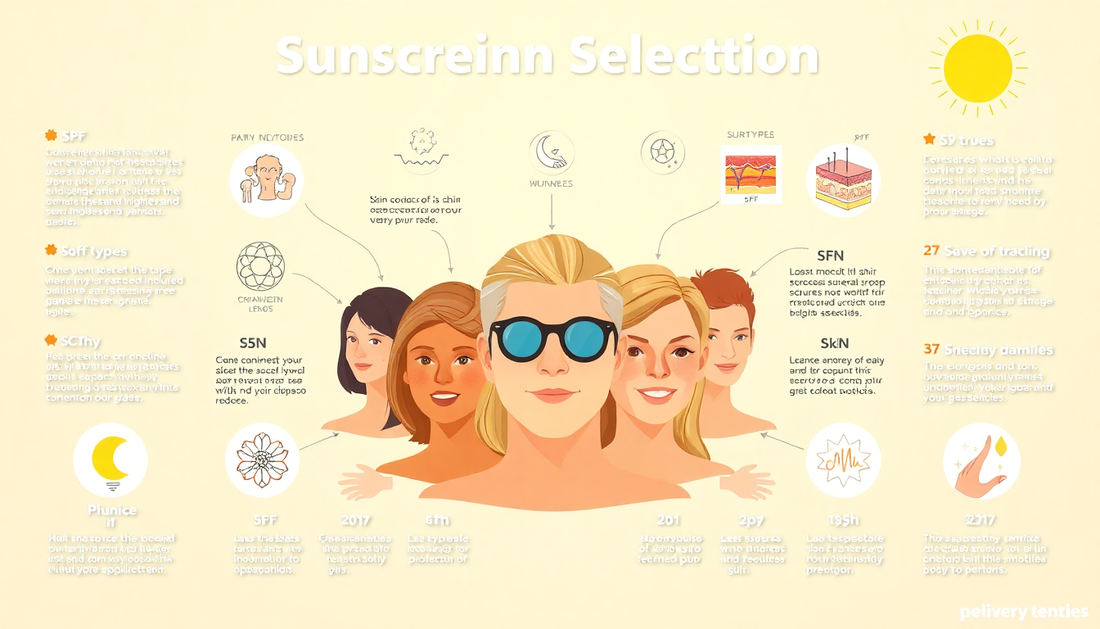
How to Choose the Right Sunscreen for Your Skin: SPF Myths & Facts Explained
Share
In the summer of 2025, sun protection has never been more crucial. As the ozone layer continues to thin, our skin is exposed to increasingly intense UV rays that can cause premature aging, sunspots, and even skin cancer. Yet, despite the abundance of sunscreen options on the market, many of us are still confused about how to choose the right formula for our unique skin types and needs.
In this comprehensive guide, we'll debunk common SPF myths, explore the science behind sun protection, and provide practical tips to help you find the perfect sunscreen for Beautiful Days - your go-to destination for all things skincare and wellness.
Understanding SPF Basics
SPF, or Sun Protection Factor, is a measure of how well a sunscreen can protect your skin from UVB rays, the primary cause of sunburns. The higher the SPF, the more time you can spend in the sun before your skin starts to redden.
However, many people mistakenly believe that a higher SPF means total protection. In reality, an SPF 30 sunscreen blocks about 97% of UVB rays, while an SPF 50 blocks around 98%. The difference is negligible, and both offer excellent protection when applied correctly.
The key is to choose a sunscreen with an SPF of at least 30, and to reapply it every 2 hours, or more frequently if you're swimming or sweating. This ensures that your skin stays shielded from the sun's harmful effects throughout the day.
Identifying Your Skin Type
Not all sunscreens are created equal, and the formula that works wonders for your friend might not be the best fit for your skin. That's why it's essential to understand your unique skin type and its specific needs.
For oily skin, look for a lightweight, oil-free formula that won't clog pores or leave a greasy residue. Dry skin types will benefit from a moisturizing sunscreen with hydrating ingredients like hyaluronic acid or glycerin. If you have sensitive skin, opt for a mineral-based sunscreen with zinc oxide or titanium dioxide, as these tend to be gentler and less irritating.
Combination skin can be a bit trickier, but a versatile, broad-spectrum sunscreen that addresses both oily and dry areas should do the trick. Remember, the key is to experiment and find the formula that leaves your skin feeling protected, comfortable, and confident.
Top SPF Myths Debunked
As we mentioned earlier, there are a lot of misconceptions when it comes to sunscreen and sun protection. Let's take a closer look at some of the most common myths and set the record straight:
Myth 1: Higher SPF means total protection
As we discussed, the difference in protection between SPF 30 and SPF 50 is minimal. What's more important is ensuring that you apply the recommended amount (about 1 ounce for your entire body) and reapply every 2 hours.
Myth 2: Dark skin doesn't need sunscreen
This couldn't be further from the truth. While melanin-rich skin may be more resistant to sunburn, it's still susceptible to sun damage, including premature aging, dark spots, and even skin cancer. Everyone, regardless of skin tone, needs to make sun protection a priority.
Myth 3: Sunscreen is only for sunny days
UV rays can penetrate clouds and even glass, so it's essential to wear sunscreen every day, even on overcast or rainy days. Consistent sun protection is the key to maintaining healthy, youthful-looking skin.
Choosing the Right Sunscreen
With so many options on the market, selecting the perfect sunscreen can feel overwhelming. Here are some tips to help you make an informed decision:
Look for broad-spectrum protection: This means the sunscreen shields your skin from both UVA and UVB rays, providing comprehensive coverage.
Decide between chemical and physical sunscreens: Chemical sunscreens absorb UV rays, while physical (or mineral) sunscreens reflect them. Both are effective, but physical formulas tend to be gentler on sensitive skin.
Check the ingredient list: Avoid sunscreens with oxybenzone, a common chemical that can be irritating and disrupt hormones. Instead, look for zinc oxide or titanium dioxide, which are natural, reef-safe alternatives.
Consider the texture and finish: If you don't like the feeling of a thick, greasy sunscreen, try a lightweight, fast-absorbing formula or a tinted option that doubles as a makeup primer.
Best Sunscreen Practices
Now that you know how to choose the right sunscreen for your skin, it's time to learn how to use it effectively. Here are some tips to ensure you're getting the most out of your sun protection:
Apply liberally and reapply often: The recommended amount is about 1 ounce (a shot glass full) for your entire body. Reapply every 2 hours, or more frequently if you're swimming or sweating.
Don't forget the often-missed spots: Many people forget to protect their lips, ears, hands, and feet, which are all vulnerable to sun damage.
Combine sunscreen with other sun-safe habits: Wear protective clothing, seek shade when possible, and avoid peak sun hours (between 10 AM and 4 PM) for maximum protection.
By following these guidelines and choosing the right sunscreen for your skin type, you can enjoy the beautiful days of 2025 with confidence, knowing that your skin is well-protected from the sun's harmful rays.
Conclusion
Navigating the world of sunscreen can be a daunting task, but with the right information and a little bit of trial and error, you can find the perfect formula to keep your skin healthy and radiant. Remember, sun protection is not just a summer essential - it's a year-round necessity that should be a crucial part of your daily skincare routine.
So, the next time you visit Beautiful Days, be sure to browse our wide selection of high-quality sunscreens and let our knowledgeable staff guide you to the best option for your skin. Your future self will thank you for making sun protection a priority.
